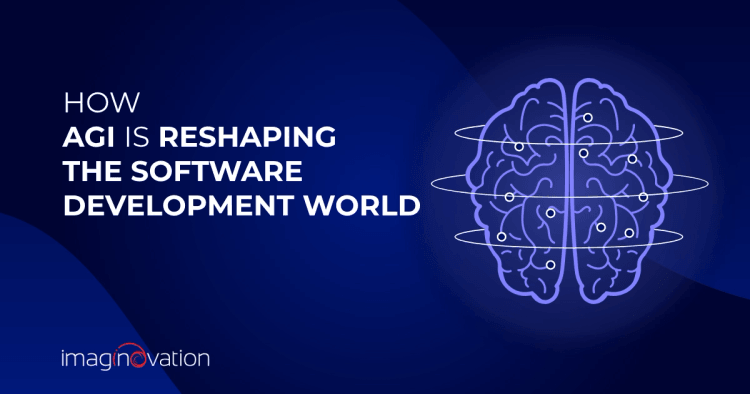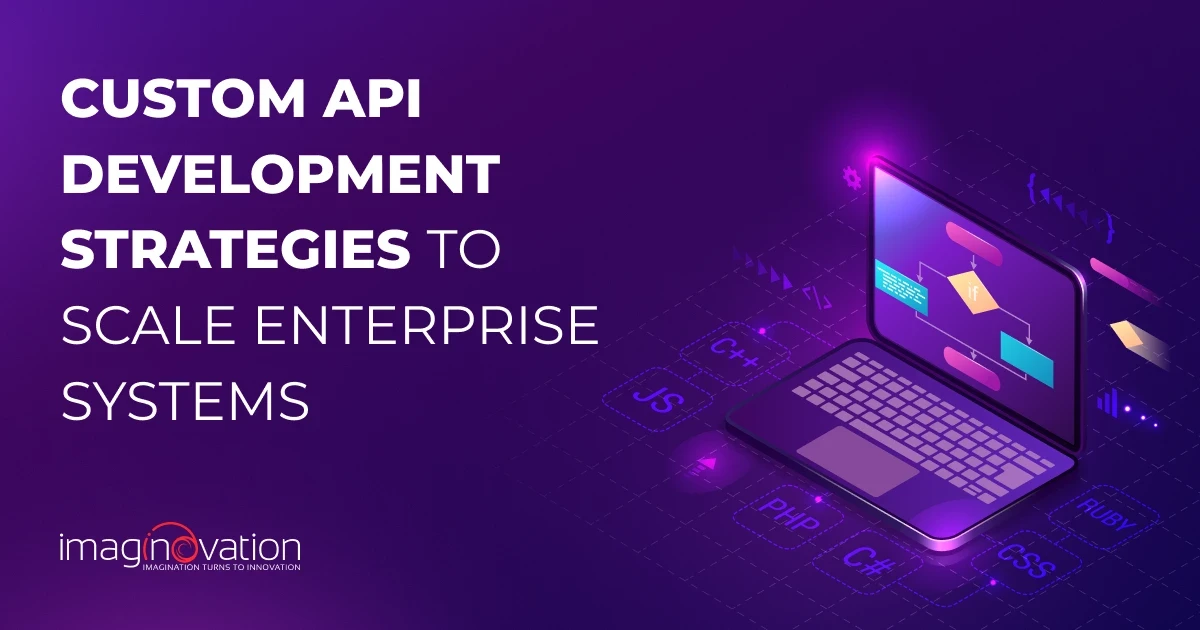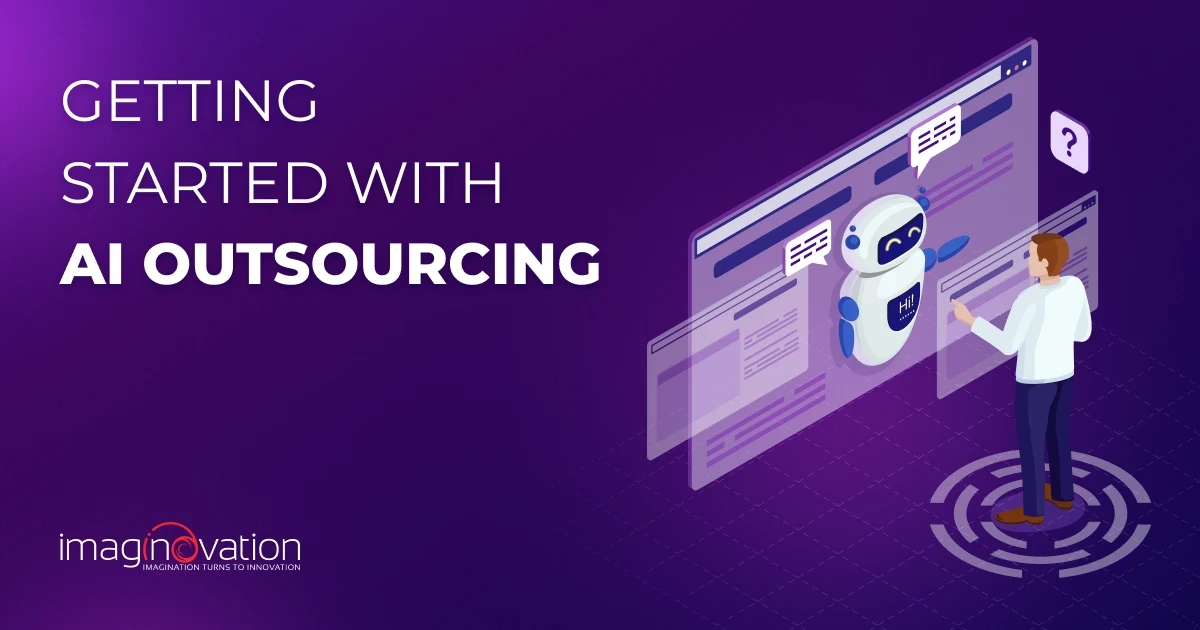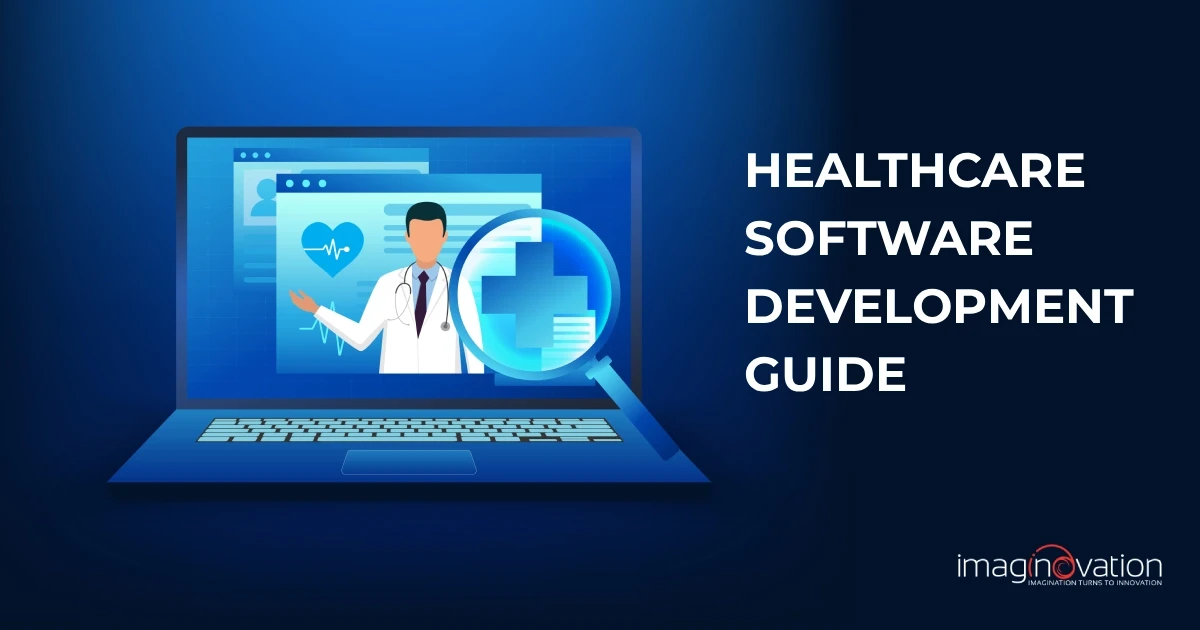We are on the verge of a groundbreaking technological shift with Artificial General Intelligence (AGI) in software development. Set to redefine the future of programming, AGI aims to mimic human cognitive abilities. Unlike traditional AI, AGI can adapt to new situations, make decisions, and interact with humans more naturally. Its transformative potential opens doors to exciting possibilities worth exploring.
In this article, we’ll dive into the basics: what AGI is, how it could impact software development, and the challenges AGI in programming may bring. Tag along to learn all you need to know about AGI. Let’s get started!
What is AGI?
Artificial General Intelligence (AGI) has been actively explored since the early days of AI research. It is still in the hypothetical stage of creating software with human-like intelligence and the ability to self-teach. The software aims to be able to perform tasks, it has not been trained and developed for. In some scenarios, it will have the capacity to outperform human capabilities in ways that will benefit the business landscape and researchers.
AGI is theoretically considered to be a strong AI. In this context, companies such as OpenAI are researching facets of AGI. The researchers focus on what it means for companies, governments, and humanity.
AGI works by incorporating logic into the AI and ML (machine learning) processes in contrast to applying an algorithm. The outcomes explored are mimicking human-like behavior. Many researchers still believe that a lot remains unexplored in achieving AGI.
Are AI and AGI the same?
Today's AGI is a theoretical concept aiming to create human-like cognitive abilities. Simply, it does not still exist. On the other hand, AI is a computer science discipline that is designed to excel at specific tasks. Let's drill down to understand AI and AGI through some key differences.
AI
- Analyzes large amounts of data and uses pre-programmed rules and algorithms to perform tasks.
- Can learn from data and develop expertise to handle unfamiliar tasks without additional training,
Examples of AI in use today:
- Digital assistants like Apple's Siri, Google Now, and Amazon's Alexa.
- AI-powered virtual chatbots.
- AI-powered technology is used in self-driving cars made by Mercedes-Benz, Toyota, Audi, Volvo, and Tesla.
- AI in-vehicle monitoring, where companies such as PlateSmart, IntelliVision, and Sighthound use computer vision and deep learning to turn conventional surveillance into vehicle monitoring.
AGI
- Possesses the ability to address challenges across diverse fields without requiring human input.
- Capable of independently learning and tackling tasks beyond its initial training.
- Designed to be a driving force of innovation, combining comprehension with creative problem-solving.
Potential Examples of AGI:
- Autonomous scientific researchers, capable of independent discoveries across various fields.
- Universal problem solvers addressing diverse challenges like healthcare, climate change, and more.
- General-purpose robotics that adapts to any task without specialized programming.
- Fully conversational AI is indistinguishable from humans in understanding and interaction.
- Adaptive AI tutors customize teaching methods for individual learning styles.
The Scaling Law of LLMs
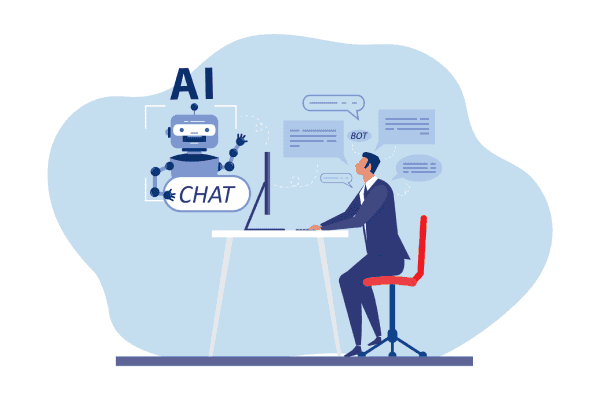
Large language models (LLMs) are being explored to transform AI capabilities and applications. With the continuous exploration of AGI and the advancement of LLMs, it is essential to understand whether scaling laws can help achieve emergent behavior leading to AGI.
In the same context, it is critical to determine whether language is a pathway to achieving general intelligence. Let's start by understanding LLMs.
Imagine you have a magical talking book (like the one in Harry Potter). You can ask it any question, such as: "Can a cat have rainbow wings?"
The magical book is like an LLM. It has read countless books, stories, and facts, allowing it to answer questions, tell stories, and even help you learn new things. However, it can sometimes make mistakes.
Now, let's explore the role of scaling. Imagine the magical talking book has only a few stories and answers. When you add new pages, it gets smarter. Each time you tweak the magical book, it provides better answers, tells more engaging stories, and understands you better. It’s like teaching your favorite stuffed toy to improve at playing pretend with you.
That’s the Scaling Law of LLMs! The more we feed the magical book (more words, bigger computers), the smarter and more creative it becomes. This helps us determine whether simply making the book bigger can turn it into something brilliant—like a real thinking mind (AGI).
But just like an enormous book, if it grows too much without careful organization, it might become too slow or confusing! So, we must find the perfect balance—big enough to be smart but not so big that it loses focus.
Let’s look at some key factors that define the fundamental principles governing the scaling laws of LLMs:
- Model Size and Performance: Scaling laws highlight the proportional impact of model size on the overall performance of LLMs. These insights help us understand the relationship between scale and proficiency.
- Computational Efficiency: Applying scaling laws requires effective management of computational resources. This ensures larger models can be accommodated while optimizing parallel processing and memory allocation.
- Language Complexity: Scaling laws enhance AI systems' ability to navigate the intricate landscape of linguistic complexity. This enables nuanced semantic understanding and generation across diverse language domains.
- Inference Scalability: The scalability of model inferences is a crucial aspect of scaling laws. It helps improve the efficiency and accuracy of language model outputs across varying scales.
Pros and Cons of Implementing Scaling Laws for LLMs
Advantages
- Enhanced Language Skills: Scaling laws improve LLMs' ability to understand and generate language with greater accuracy and fluency.
- Boosted AI Innovation: AI applications evolve faster by following scaling laws, enabling more advanced language processing and comprehension capabilities.
- Greater Scalability and Flexibility: Scaling laws allow language models to adapt seamlessly to different languages and computational environments, making them more versatile.
Drawbacks and Challenges
- High Computational Costs: Implementing scaling laws requires significant computing power, and demands advanced infrastructure and substantial resources.
- Complex Training Process: Training large language models under scaling laws comes with challenges like optimizing performance, ensuring model convergence, and managing vast amounts of training data.
- Ethical Concerns: Expanding AI through scaling laws raises ethical questions about responsible usage, potential biases, and the broader impact on society and culture.
Bottom line: If scaling LLMs continues to enhance performance, we could see powerful AI by 2040—or even sooner—capable of automating most cognitive tasks and accelerating AI advancements. However, achieving AGI could take much longer and pose more significant challenges if scaling hits its limits, as discussed in this post.
Futurist Ray Kurzweil predicts that AGI will emerge by 2029, reaching human-level intelligence. By 2045, he envisions the Singularity, where AI surpasses human intelligence, driving exponential technological progress. He further suggests that humans will merge with AI, amplifying intelligence a millionfold and reshaping civilization in ways we can barely imagine.
The Turing Test: Can AGI Prove Its Intelligence?
As we explore AGI and the advancements in scaling language models, a fundamental question arises: How do we determine when an AI has truly reached human-level intelligence?
One of the earliest and most famous benchmarks for machine intelligence is The Turing Test, proposed by Alan Turing in 1950.
Understanding the Turing Test
Alan Turing, often called the father of modern computing, introduced the test in his paper "Computing Machinery and Intelligence." Instead of asking, "Can machines think?", he reframed the question as "Can a machine communicate so convincingly that a human cannot tell it apart from another human?"
The test involves a human judge engaging in a text-based conversation with both a machine and another human. If the judge cannot reliably distinguish which is which, the machine is said to have passed the test, demonstrating a form of intelligence.
Does Passing the Turing Test Mean AGI is Achieved?
Many AI systems today, including large language models (LLMs) like GPT, have come close to fooling humans in conversational settings. However, passing the Turing Test doesn’t necessarily mean an AI has general intelligence. Current AI models can generate human-like text but lack true understanding, reasoning, and self-awareness—key elements of AGI.
AGI aims to go beyond imitation. While the Turing Test is an important milestone, true AGI would need to exhibit problem-solving abilities across multiple domains, adapt to new situations, and demonstrate independent reasoning beyond pre-learned patterns.
The Limitations of the Turing Test in AGI Development
While influential, the Turing Test has its limitations as a measure of AGI:
- Mimicry vs. Understanding: A system can generate human-like responses without actual comprehension.
- Narrow Focus: The test only evaluates conversational ability, ignoring other aspects of intelligence like creativity, decision-making, or emotional intelligence.
- Exploitable Loopholes: AI models can be trained to exploit human biases and expectations rather than genuinely thinking.
Beyond the Turing Test: How Do We Measure AGI?
As AGI research progresses, alternative tests are being explored to assess true machine intelligence. Some of these include:
- The Lovelace Test: Determines whether an AI can create something truly original and unexpected, beyond its programming.
- The Winograd Schema Challenge: Tests an AI’s ability to understand ambiguous language and use real-world reasoning.
- Causal Reasoning Tests: Evaluate whether AI can infer cause-and-effect relationships, a crucial trait of general intelligence.
While the Turing Test remains a historical benchmark, achieving AGI will require proving intelligence beyond conversation—demonstrating adaptability, reasoning, and autonomous learning.
The Impact of AGI on Software Development
AGI is poised to impact software development by automating repetitive tasks thereby improving development speed. Moreover, one can expect better code quality and enablement of soft-optimizing software, allowing developers to focus on more creative aspects of the process.
Here are some key impacts on software development:
- Better code quality: AGI can identify potential code glitches and issues based on analyzing vast amounts of data and applying sophisticated algorithms. Further, it can suggest improvements and optimize code for better performance and efficiency.
- Automated coding and testing: AGI can significantly reduce manual effort and improve code reliability by automatically generating code-based specifications, writing unit tests, and performing complex system-level testing.
- Intelligent code refactoring: AGI can work on your existing code and work on enhancing maintainability and readability, helping with adherence to best practices.
- Augment development cycles: AGI can help reduce development time, as it boosts automated coding, testing, and optimization. Thus, it supports quicker release cycles and faster time-to-market.
- Self-healing software: AGI could potentially build software that would have the capacity to detect and fix errors or bugs autonomously. The outcomes could improve system reliability and reduce maintenance overhead.
- Complex problem-solving: AGI can focus on dealing with intricate software design challenges based on various factors and offer optimal solutions. The outcomes allow developers to focus on high-level decision-making.
AGI Use Cases Across Industries
1. Software Development
Use Case: Automating coding tasks and improving developer productivity.
GitHub Copilot – Assists developers by generating code snippets, suggesting solutions, and completing entire functions. This reduces coding time and minimizes errors.
2. Healthcare
Use Case: Accelerating drug discovery and improving diagnosis accuracy.
IBM Watson Health – Uses AGI to analyze vast medical literature and patient data, helping doctors make informed decisions for complex diseases like cancer.
3. Robotics & Autonomous Systems
Use Case: Enhancing autonomous decision-making and robotic efficiency.
Boston Dynamics’ Robots – Robots like Spot and Atlas perform real-world tasks such as navigation, inspection, and physical labor, reducing human workload in hazardous environments.
SoftBank’s Pepper Robot – Uses voice and emotion recognition to interact with humans, enhancing customer service experiences.
4. Cybersecurity
Use Case: Predicting and preventing cyber threats in real-time.
Darktrace AI Cybersecurity – Leverages AGI to analyze cyber threats, anticipate attacks, and provide autonomous security responses.
CrowdStrike Falcon Platform – Detects and mitigates malware and ransomware attacks, with AGI enhancing proactive threat defense.
5. Finance & Business
Use Case: Automating risk assessment, fraud detection, and decision-making.
JPMorgan Chase’s COiN – Automates contract analysis and risk assessment, reducing manual workload and human errors.
Mastercard AI Fraud Detection – Monitors transaction patterns to detect and prevent fraud before it occurs, ensuring secure financial transactions.
6. Manufacturing
Use Case: Optimizing production efficiency and reducing waste in smart factories.
Siemens MindSphere – Uses AGI to manage factory operations autonomously, improving production and logistics.
Fanuc AI Robots – Learns complex, multi-step processes, adapting to evolving production needs and enhancing efficiency.
Challenges and Ethical Considerations of AGI in Software Development
Let’s look at some critical challenges.
- Ethical considerations: The development and deployment of AGI raise concerns about potential bias, in the context of job displacement. It underscores the need for robust safeguards to prevent misuse.
- High development costs: Implementing advanced AGI systems and maintaining them, may require significant resources and expertise.
- Security concerns: Integrating AGI into software development has the potential to introduce new vulnerabilities if not properly secured.
- Explainability issues: Understanding how AGI works around its decisions can be complex, making debugging and troubleshooting difficult.
Our experience with AGI in software development
At Imaginovation, we've always strived to build products that simplify workflows and push the boundaries of what's possible in task management.
MagicTask is the flagship product created by Imaginovation. It is a robust task management platform that oversees Imaginovation's own internal operations. Currently, the team uses the platform to manage their weekly sprints and track the work progress for different projects.
The team’s experience with the possibilities of Artificial General Intelligence (AGI) in the context of MagicTask has been transformative. It has helped to envision a future where task management goes beyond automation and becomes a self-learning, intuitive assistant.
Here’s how AGI could take MagicTask to the next level:
- Smart Task Automation – With AGI, MagicTask could create to-do lists and automatically prioritize tasks, delegate responsibilities, and rearrange schedules based on real-time project needs without manual input.
- Context-Aware Task Management – AGI could analyze project data, understand team dynamics, and adjust timelines, resources, and strategies for optimal productivity. Imagine a task management tool that tracks progress and learns how your team works to enhance efficiency over time.
- Predictive Analytics – By leveraging AGI, MagicTask could predict potential bottlenecks, identify risks before they occur, and suggest proactive solutions, giving teams the foresight needed to avoid delays and meet deadlines with ease.
- Continuous Improvement – AGI would enable MagicTask to self-optimize—learning from past projects and suggesting workflow improvements, creating a tool that constantly gets smarter and more efficient.
AGI’s Role in the Future of MagicTask
AGI integration could transform MagicTask from a simple organizational tool to an intelligent, adaptive assistant. Instead of merely offering features, MagicTask could anticipate your team’s needs, suggest the most efficient paths forward, and evolve to meet the changing demands of your projects.
With AGI, MagicTask could be more than just a task manager—it could be your team’s smartest collaborator, taking productivity to new heights.
Read more about MagicTask here.
How do you stay updated with this new technology?
AGI is rapidly evolving, and staying informed and learning how to rope in the benefits for your organization is essential.
Here are some key strategies to stay informed:
- Check websites like MIT Technology Review, TechCrunch, and VentureBeat for regular news, blogs, and updates
- Follow blogs from leading AI research labs such as DeepMind, OpenAI, and Google AI
- Learn from interviews and experts on discussions on current AGI developments by subscribing to podcasts like "The AI Podcast," "This Week in AI," or "AI Now."
- Participate in major AI conferences like NeurIPS, ICML, and AAAI to gain access to the latest research presentations and discussions on AGI.
- Join online forums and discussion groups dedicated to AI and AGI where you can ask questions, share insights, and stay updated on the latest advancements.
- Explore platforms like Coursera, edX, and Udacity to access courses on AI fundamentals, advanced AI techniques, and AGI concepts.
- Regularly check preprint servers like arXiv to access the latest research papers on AGI-related topics.
Wrapping Up
AGI has the potential to shape future software development projects. It's time to explore the possibilities of AGI in software development. As business entrepreneurs, keep an eye on trends and technological development for a bright future that benefits everyone.
Smart, Scalable, and Future-Ready Software with Imaginovation
Harness the power of AI-driven solutions to transform your business and stay ahead in the digital era. At Imaginovation, a multi-award-winning web and mobile app development company in Raleigh, we create cutting-edge applications designed to meet your unique challenges.
Ready to innovate? Let’s build something extraordinary together—contact us today!
Ready to build an app, but not sure where to start?
We've got you covered. Click the button below to get started.

